Gross motor skills are essential for a child’s physical development. These skills involve the use of large muscle groups and coordination of movements. As a parent or caregiver, it’s important to provide opportunities for your child to practice and develop these important skills, especially during the crucial first year of life.
One-year-olds are at a stage where they are starting to explore their environment and develop their physical abilities.
Gross motor activities can help them strengthen their muscles, improve their balance and coordination, and develop their confidence in their abilities. These activities can also provide opportunities for bonding and interaction between parents and children.
There are many simple and fun gross motor activities that you can do with your one-year-old. From crawling and walking practice to playing with balls and toys, these activities can be easily incorporated into your daily routine.
In this article, we will explore some easy gross motor activities for one-year-olds that you can try at home.
The Importance of Gross Motor Activities
Gross motor activities are essential for the development of a child’s physical and cognitive abilities. These activities involve the use of large muscle groups and help children gain strength and confidence in their bodies. Here are some of the benefits of gross motor activities:
Benefits of Gross Motor Activities
Physical Development
Gross motor activities play a vital role in a child’s physical development. As they engage in various movements and exercises, they learn to develop and refine essential skills such as balance, coordination, and spatial awareness.
These foundational gross motor abilities are crucial for a wide range of future activities, including playing sports, dancing, or simply navigating the various playground equipment with ease and confidence.
By participating in gross motor activities, children also build their strength, endurance, and flexibility throughout entire body. As they grow and develop, these physical attributes help them maintain a healthy lifestyle and engage in more complex movements and activities.
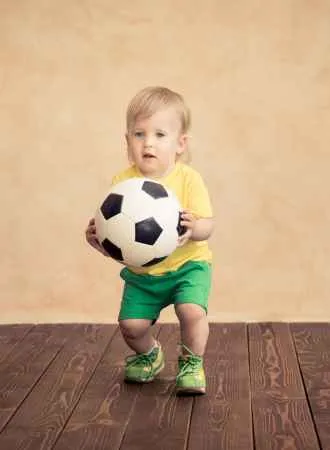
Mental Development
Participating in gross motor activities also contributes to a child’s cognitive development. These activities often require children to concentrate, pay attention, and think critically about their actions. As a result, they learn how to focus, problem-solve, and develop their memory and attention span. Gross motor activities can also promote creativity, as children often come up with new and imaginative ways to move and play.
Moreover, the physical exertion involved in these activities can improve brain function. Research has shown that physical activity increases the flow of oxygen and nutrients to the brain, resulting in enhanced cognitive function and overall mental health.
Social Development
Gross motor activities provide excellent opportunities for children to interact with others, helping them develop their social skills. Many of these gross motor skills activities involve playing with others, such as engaging in a game of catch, tag, or group sports. These experiences teach children valuable lessons about taking turns, cooperating, and communicating effectively with others. They also learn how to read social cues, understand the perspectives of their peers, and develop empathy.
Gross motor activities offer children the chance to practice their leadership and teamwork skills. As they engage other children in group activities, they can learn to negotiate, compromise, and work together towards a common goal. These experiences help them build strong social bonds and create lasting friendships.
Emotional Development
Gross motor activities can have a positive impact on a child’s emotional well-being. Engaging in physical play provides opportunities for children to release pent-up energy and reduce stress, both of which contribute to improved emotional health.
These activities can also foster a sense of accomplishment and pride in children as they learn new skills and overcome challenges. As they master new movements or complete a difficult task, they build confidence in their physical skills and abilities, leading to improved self-esteem and resilience.
Participating in gross motor activities allows children to express their emotions healthily and constructively. For example, they might channel their frustration into a vigorous game of tag or release their excitement through an exuberant dance routine.
This emotional release helps them develop emotional regulation skills and promotes overall emotional balance.
It is important to encourage gross motor activities in children from a young age. These activities can be as simple as crawling, rolling, or playing with toys that encourage movement. As children grow and develop, more complex activities with great gross motor activity such as running, jumping, and climbing can be introduced.
Types of Gross Motor Activities
Outdoor Activities
Outdoor activities are a great and fun way to get your 1-year-old moving and exploring the world around them. Here are some fun and engaging gross motor activities to try:
Balancing: Set up a balance beam using a piece of wood or a low wall. Encourage your child to walk across it.
Climbing: Find a safe and secure climbing structure at a playground or create one at home using pillows and cushions.
Reaching: Place a variety of objects at different heights, such as bubbles or balloons, and encourage your child to reach for them.
Riding: Provide a ride-on toy, such as a tricycle or scooter, for your child to pedal or push around.
Swimming: Take your child to a pool or set up a small kiddie pool in your backyard for them to splash and play in.
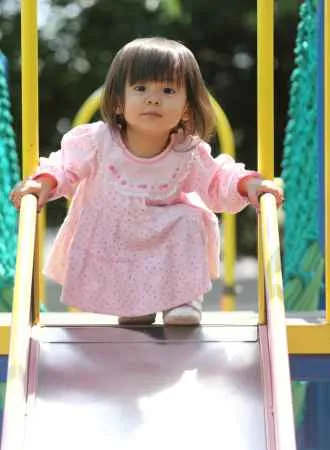
Indoor Activities
Indoor activities can be just as fun and beneficial for your toddler active 1-year-old’s gross motor development. Here are some ideas to try:
Building: Use soft blocks or cardboard boxes to build towers and structures. Encourage your child to knock them down and rebuild them.
Dancing: Play music and dance with your child, encouraging them to move their whole body to the beat.
Hopping: Create a hopscotch board using tape or chalk and encourage your child to hop from square to square.
Pretend play: Set up a play area with dress-up clothes and props, such as a kitchen or grocery store, to encourage your child to engage in imaginative play.
Throwing and catching: Use soft balls or bean bags to practice throwing and catching with your child.

Safety Measures to Consider
While gross motor activities are important for your 1-year-old child’s development too, safety should always be a top priority. Here are some safety measures to consider:
Always supervise your child during gross motor activities to prevent accidents and injuries.
Make sure the play area is free of hazards such as sharp objects, loose cords, and small objects that can be swallowed.
Choose age-appropriate toys and equipment that are sturdy and in good condition.
Ensure that your child wears appropriate clothing and footwear during outdoor activities to protect from sunburn, insect bites, and scrapes.
Teach your child the importance of safety rules such as not running near the pool, not climbing on furniture, and not touching hot surfaces.
Keep all cleaning supplies, medications, and other hazardous materials out of reach of your child.
By following these safety measures, you can help ensure that your child stays safe while enjoying gross motor activities that promote their physical and cognitive development.
How to develop gross motor skills?
There are several ways to help gross motor skills development in young toddlers, mainly by incorporating some gross motor skill development activities into their daily activities such as:
Encourage physical activity: Encourage your child to participate in physical activities such as running, jumping, skipping, and climbing.
Play outside: Playing outside provides ample opportunities for your child to engage in physical activities and explore their surroundings.
Provide toys and equipment: Provide toys and equipment that promote gross motor skills such as balls, bikes, scooters, and climbing structures.
Encourage exploration: Encourage your child to explore their environment and try new movements.
Participate in physical activity with your child: Join in on physical activities and play with your child, providing opportunities for them to learn and grow.
Provide a safe environment: Ensure that your child has a safe and secure environment in which to play and engage in physical activities.
Practice, practice, practice: Encourage your child to practice their gross motor skills regularly to help them develop and improve their coordination, strength, and balance.
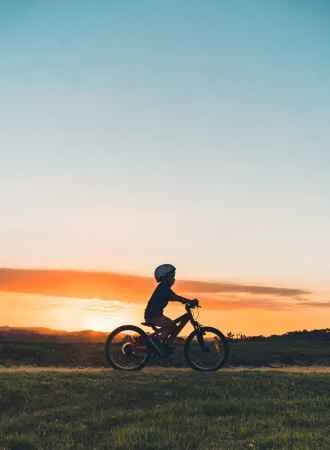
Tips for Engaging 1-Year-Olds in Gross Motor Activities
Engaging younger toddlers and 1-year-olds in gross motor activities can be a challenge, but it is essential for their physical and cognitive development. Here are some tips to make the process easier:
Keep it simple: Choose activities that are easy to understand and execute. Too many instructions can confuse and frustrate 1-year-olds.
Make it fun: Incorporate toys and games that your child enjoys. This will make the activity more engaging and encourage participation.
Be patient: 1-year-olds are still developing their coordination and balance. It may take time for them to master an activity, so be patient and provide plenty of encouragement.
Provide a safe environment: Make sure the area where your child will be engaging in gross motor activities is safe and free from hazards. Supervise your child at all times to prevent accidents.
Encourage exploration: Allow your child to explore their environment and experiment with different movements. This will help them develop their gross motor skills and build confidence.
Remember, gross motor activities should be a fun and positive experience for your child and whole family. With these tips, you can help your 1-year-old and children develop in their physical abilities and set them on the path to a healthy and active lifestyle.
FAQS on gross motor activities for 1 year olds
What gross motor skills should a 1-year-old have?
At 1 year old age group only, children should be developing gross motor skills such as:
Crawling or walking independently
Standing up and sitting down without assistance
Climbing up and down stairs with assistance
Throwing and kicking a ball
Running and jumping with assistance
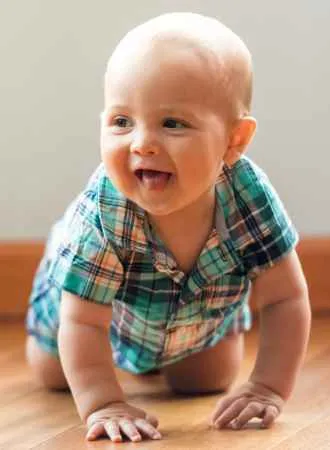
How can I improve my 1-year-old’s gross motor skills?
To improve your toddlers gross motor skills, you can do more gross motor skill activities like:
Provide plenty of opportunities for physical activity, such as crawling, walking, and playing outside.
Encourage your child to explore their environment and try new movements.
Provide toys and activities that promote gross motor skills, such as balls, push and pull toys, and ride-on toys.
Provide a safe and stimulating environment that encourages movement and exploration.
Model physical activity by engaging in play and exercise with your child.
Have a dance party, perhaps dancing around stuffed animals and get the whole family involved, this is ideal for all age groups.
What is an example of a gross motor movement for a 1-year-old?
An example of a gross motor movement and developmental milestones for a 1-year-old is crawling or walking independently, climbing up and down stairs with assistance, throwing and kicking a ball, running and jumping with assistance, and standing up and sitting down without assistance.
Creating an obstacle course for a toddler can be a fun way to help them develop their gross motor skills and help get them gross motor control. Here are some tips on how to create an obstacle course for a toddler:
Start with simple obstacles: Begin with simple obstacles that your child can easily navigate, such as stepping over a low hurdle (perhaps a laundry basket or bin?_ or crawling through a tunnel.
Add more challenging obstacles: As your child becomes more confident, gradually add more challenging obstacles such as balance beams, stepping stones, and small obstacles to climb over.
Use household items: Use items that you have around the house such as pillows, cushions, and boxes to create obstacles.
Create a circuit: Create a circuit of obstacles for your child to move through, such as jumping over a line, crawling through a tunnel, and climbing over a box.
Add fun elements: Add fun elements to the obstacle course such as music or toys to keep your child engaged and motivated.
Supervise your child: Make sure to supervise your child while they navigate the obstacle course to ensure their safety.
Encourage your child: Encourage your child to keep trying, even if they struggle with an obstacle. Praise them for their efforts and progress.
What are visual motor activities for 1-year-olds?
Visual motor activities for 1-year-olds may include activities such as:
Playing with stacking toys or shape sorters that require hand-eye coordination.
Drawing with large crayons or markers.
Playing with pegboards or puzzles that require visual and fine motor skills.
Building with blocks or other construction toys.
Playing with balls or other rolling toys that promote visual tracking and coordination.

What are the gross motor skills of a 12-18-month-old?
The gross motor skills of a 12-18-month-old may include:
Walking independently
Climbing up and down stairs with assistance
Running and jumping with assistance
Kicking and throwing a ball
Pushing and pulling toys
Exploring the environment through movement and play.
What are the gross motor skills of an 18-month-old?
The gross motor skills of an 18-month-old may include:
Walking and running independently
Climbing up and down stairs independently
Kicking and throwing a ball with more accuracy
Pushing and pulling toys with greater control
Exploring the environment through movement and play with greater confidence and coordination.
How can I improve my 18-month-old’s gross motor skills?
To improve your 18-month-old toddler’s gross motor skills, you can:
Provide plenty of opportunities for physical activity and outdoor play.
Encourage your child to try new movements and explore their environment.
Provide toys and activities that promote gross motor skills, such as balls, ride-on toys, and play tunnels.
Provide a safe and stimulating environment that encourages movement and exploration.
Model physical activity by engaging in play and exercise with your child.
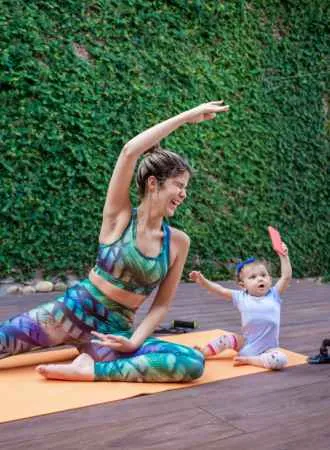
Take Away on Gross Motor Activities for 1 Year Olds
Gross motor activities for one-year-olds are important developmental milestones that help children grow and develop their muscles and nervous system at their own pace. Toddlers are naturally active, and it’s important to encourage movement with activities that promote the development of large muscles.
Building blocks are a great example of a toy that can help children develop important skills such as hand-eye coordination and even help them learn to walk. Crawling is also a fun movement activity for younger kids, while older toddlers may enjoy playing with soft toys, plastic balls, or hula hoops.
Taking children to the local park is also a great way to get kids moving and encourage outdoor play. Simple activities like crawling fun or walking in a straight line can help most babies and young children develop important skills.
Red light, green light is also a fun game for children ages 1-3. As children grow and master walking at their own rate, they will progress through different stages and develop smaller muscles, such as those in the hands and feet.
Bean bag toss and more bubbles are great activities for developing muscles for rainy days and can be enjoyed by most toddlers with their favorite toys and other kids who have also mastered walking.




